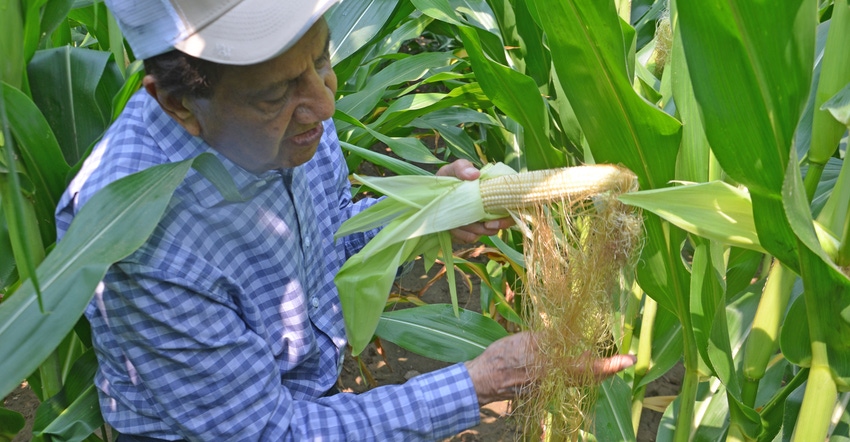
This is the time of year to scout cornfields and check for the payoff. How well did ears pollinate? Are yield prospects good if you get favorable weather during grain fill?
“The best way to assess pollination success is to pull a few ears at random and evaluate kernel set,” says Dave Nanda, director of genetics for Seed Genetics Direct, sponsor of Corn Watch ’21. “Pull those husks back and see what ears look like. Depending on if pollination is complete or still ongoing, you may still find some silks attached to the ear.”
Related: What is happening inside your cornfields?
Nanda explains that each silk’s job is to deliver a pollen grain from the tassel to an individual ovule on the ear to form a kernel. Once the pollen grain reaches the ovule and fertilization occurs, the silk falls off the ear. If an individual silk doesn’t get pollinated, it remains attached to the ear.
“Fertilization starts at the butt of the ear and progresses toward the tip,” he explains. “Kernels at the tip are pollinated last. If stress develops, they would be the first kernels which the plant aborts. Each plant wants to make as many progeny as possible. If the plant decides it can’t fill all the kernels that were fertilized, then it aborts kernels, starting at the tip, until it believes it can fill all remaining kernels.”
Shake test
The classic test to determine how far pollination is progressing if it isn’t complete is the shake test. Bob Nielsen, a Purdue University Extension corn specialist, made this test famous several years ago. It’s simple to do and provides insight into the pollination process.
“Once you have pulled the shucks back on an ear, simply hold the ear out horizontally in front of you and shake it,” Nanda explains. “If silks fall off, those ovules pollinated, and kernels should develop there. If silks remain attached to the ear, those silks are connected to ovules which aren’t pollinated yet. If there is still pollen in the field, there is a chance they can still be pollinated. If there is no pollen remaining, then those will be blanks on the ear.”
Weather can impact whether all silks pollinate as they should, Nanda explains. Under extreme heat or drought stress, like what occurred in many areas in 2012, pollination will be disrupted. During that season, whole ears were left blank in some fields. Some ears only had a few kernels.
Insects can also interfere with pollination success, he notes. Silk clipping, usually by Japanese beetles or adult rootworm beetles, can interfere with pollination if beetle numbers are high enough and they constantly clip silks within one-half inch of the ear.
Early indications are that pollination likely went well in many parts of the Corn Belt in 2021. The big challenge now is finishing the season without major stresses that could negatively affect grain fill and reduce kernel size.
About the Author(s)
You May Also Like




